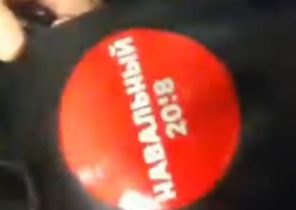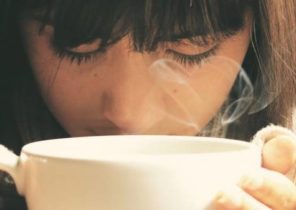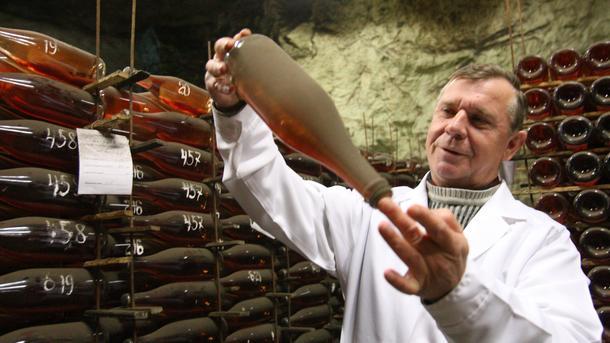
To learn how to make the best sparkling wine (champagne is produced only in the French champagne region, and these winemakers hold sacred the Madrid agreement, emphasizing this fact), not necessarily to leave Ukraine. You have to go down… under the ground — a gypsum cave located near the town of Bakhmut (Artemovsk former) in Donetsk region, where 25 acres is a town with winding galleries. Here you can spend the day walking the aisles with shelves of bottles, inside which there is true magic — the transformation of the sun in the wine.
“FRENCH CAVES”. Upstairs Artemovskiy factory of sparkling wines (now PJSC “Artileri”) is no different from any other industrial production. Here the factory management. Here warehouses, workshops. And then — the entrance to the cave, iridescent, like magic, all the colors of the rainbow. The clue to this unusual illumination comes quickly: the descent decorated with colorful fluorescent lamps. Even the cave walls painted in pink, orange, yellow and green to mood because of the gray plaster of the employees of the plant is not spoiled.
To produce gypsum in Bakhmut began in the late nineteenth century. In 1937 graduated, leaving a wide underground pedestrian walkway with high arches. After the Second world Hitler coalition countries — Romania, Hungary and Bulgaria — as “grape country,” was calculated with the USSR brandy, brandy spirits and wine. In the country just poured trainloads of barrels, but the wine need to be stored somewhere. And not just “somewhere”, and in the basement with an average annual temperature of 13-15 degrees. At first the store was trying to get in the salt mines, but salt aggressive environment, so that the hoops on wine barrels began to rust and crumble. And then the first future leaders of the Artemovsky plant was able to prove to the people’s Commissar Mikoyan that the Artemovsk gypsum caves are identical to the French cellars of the champagne region — and will be the perfect place not only to store wine but also create a real sparkling. So, in 1950, came the stadium, which is already 66 years produces sparkling classic method in the bottle.
Is one of the largest enterprises in Eastern Europe, which produces sparkling wines exclusively by the classic technology — says “Today” historiographer of the enterprise Yury Korolev. — There are two methods of production of sparkling: traditional bottle and crash the tank. We have a saturation of wine with carbon dioxide takes place inside the bottle, from nine months to three years and above, with the accelerated method, the saturation occurs in the tank for 3-4 months. In the CIS countries were and still are 4 main factory that produce classic sparkling and we are in first place by volumes.
Reserve capacity allows to produce 25 million bottles, but this volume has selected only once, in pre-2013, then was 19.2 million
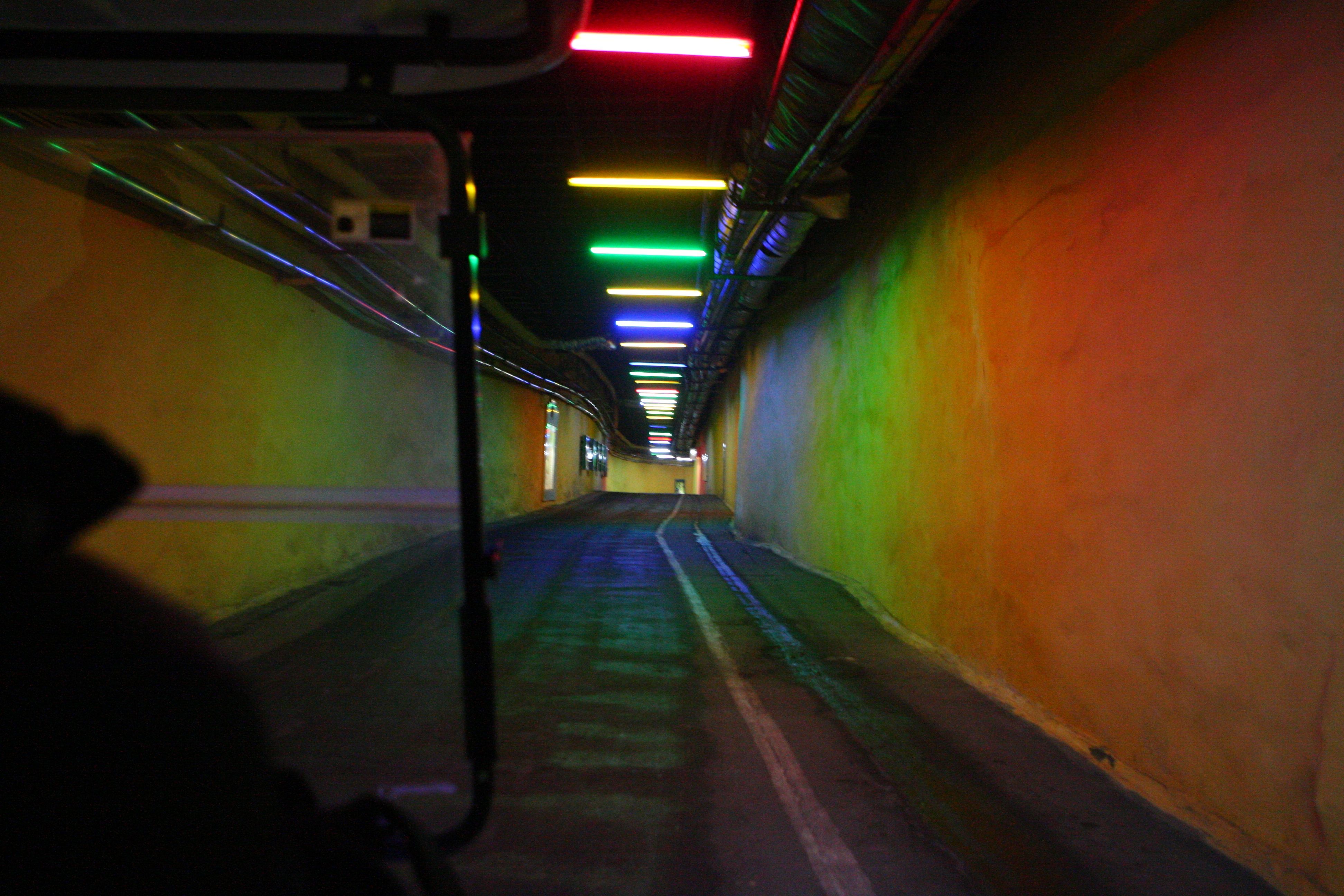
The entrance to the cave. All colors of the rainbow.
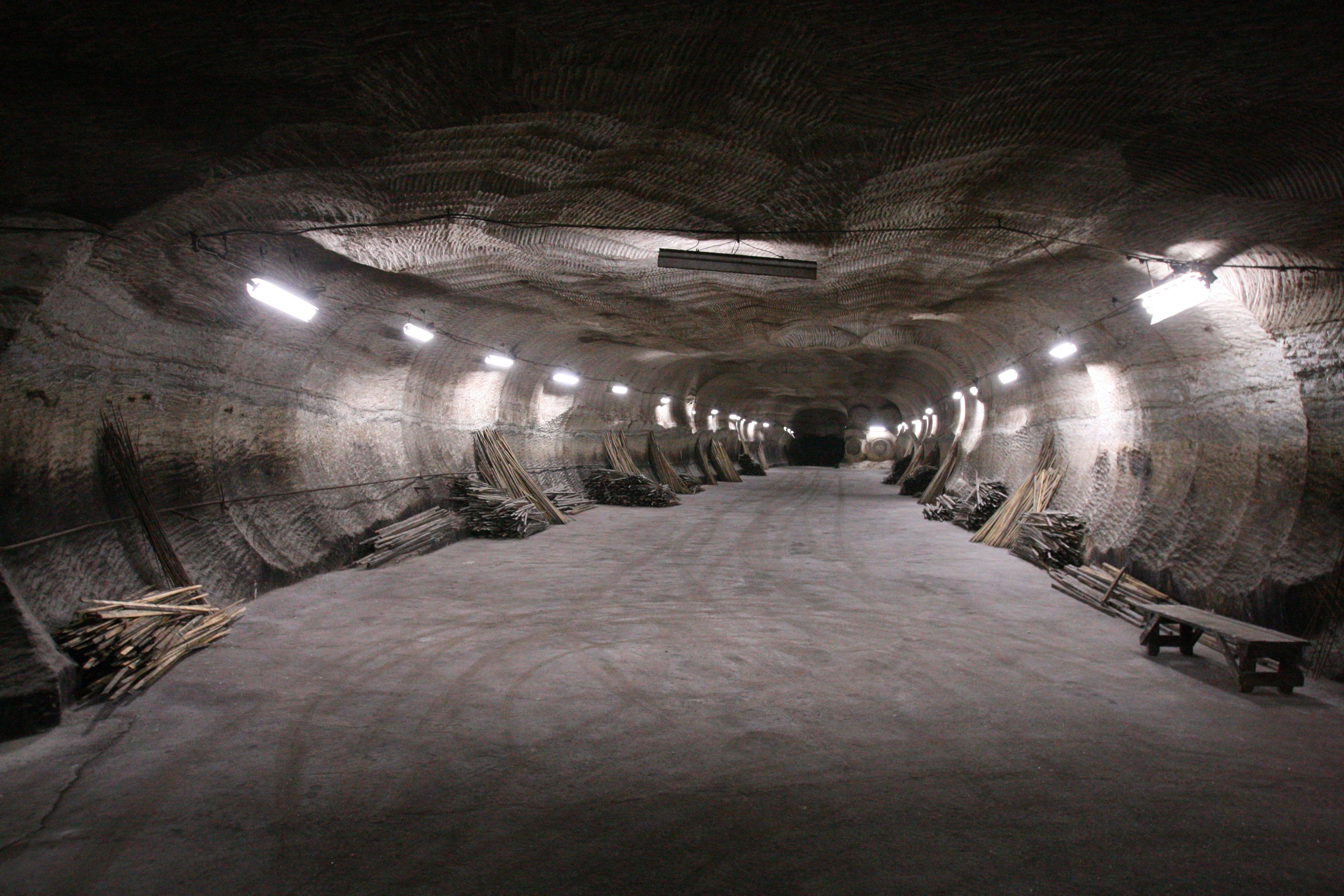
Tunnels. 25 acres of galleries housed the plant.
“THE CREAM”. Generally a trip to Bakhmut was for us a real discovery. For example, the meaning of the word “wine” on the label of sparkling always remained a mystery, but now, in vinomaterialami the shop, I suddenly find out that… the wine, the excellent, delicious wine that has undergone the first fermentation at the enterprises of primary winemaking Odessa, Nikolaev and Kherson. Moreover, in the bins of the plant is purchased before 2013, the Crimean.
“Wine” is our term, — explains the head vinomaterialov shop Tatiana Slesareva. — Because for us it is wine — the raw material for the production of sparkling, semi-finished product. But for the average consumer — it’s a great wine, like a home, the cream. Selection of foundations for the future of sparkling engaged in our technology.
— Requirements for wine is very high: at least 26 input criteria, confirms Queens. — Our winemakers in late October — early November, go to the vineyards, wine tasting, taking samples at the plant; laboratory checks, chief winemaker vineyard writes a certificate of quality — and only then is the supply.
The wine is really excellent. White grapes sparkling here take Aligote, Pinot, Chardonnay, Riesling and Rkatsiteli. Red Cabernet, Merlot and Saperavi. For pink — and white Pinot and Cabernet and white (paint guilt gives the skin, so when this technology, the juice of the red grapes are taken immediately, not allowing him to be painted).
The wine shop is the first step on the way to creating a classic sparkling wine. First of all, the process of Assemblywoman: combine wine on the varieties and habitats. The resulting assemblage of “rest” for 20 days, then it was filtered. Then, mixing materials of different varieties make up the blend. This deals with the technology and here the magic begins: it is important not only to mix different wines, but also to predict how a blend will be revealed in the future. After you create a blend, which must be approved by the Commission of the plant, the wine for 5-6 days placed in a cooling installation, so remove Tartar.
After walking through the shop, where it is stored and prepared wine, Tatyana Slesareva gives us to try a blend of red and pink and white assemblage. Incredible, pink Pinot surprising currant and peach; white plays with Jasmine and Apple; and, finally, the amazing red, the tannins are soft, melting butter — not surprisingly, this wine is 2010, and the present Crimea, Cabernet and Saperavi, chocolate and berries.
And here’s another interesting fact: it turns out that sparkling “Crimea” has always released here, since 1972, of course, the Crimean wine.
The lottery shop is a Franco-Italian line, built six years ago. Two such work in France and help release the “Dom Perignon”, and the third here. The bottle held a lot of checks coming in the pipeline, where the first washing machine rinses it with boiling water, and then starts the main — spill circulation of the mixture. It’s a blend that goes down the vinoprovod, wine yeast and the liqueur de tirage (a mixture of blend and sugar so the yeast have something to eat and to release carbon dioxide). All this is mixed under the strict supervision of microbiologists. If you look at the light the murky blend, reminiscent of mash.
Next, the machine puts a cap (like a cork from a beer) and Japanese robot palletizer puts the bottle in the container.
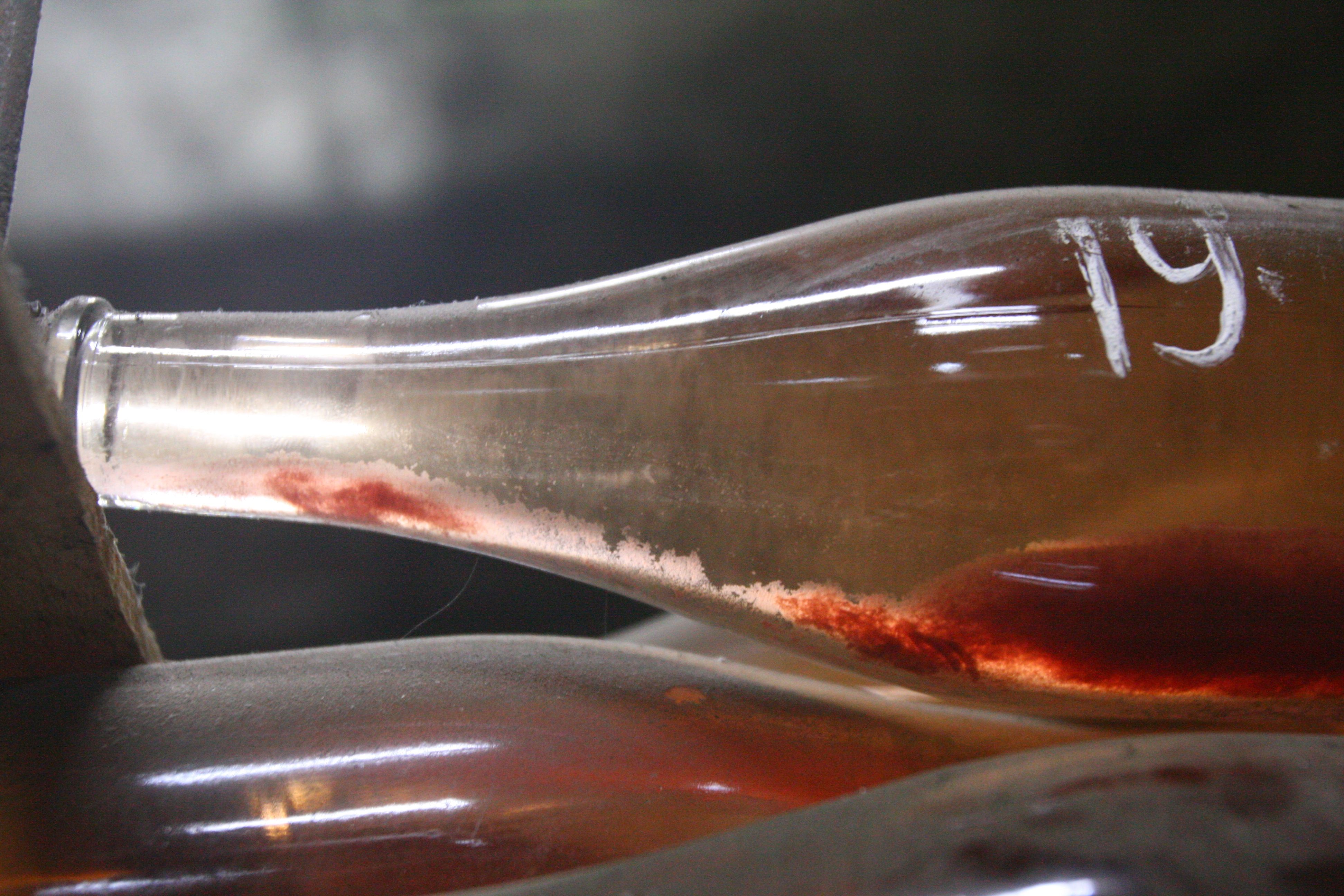
Cuvée. Almost ready sparkling with the sediment from the yeast.
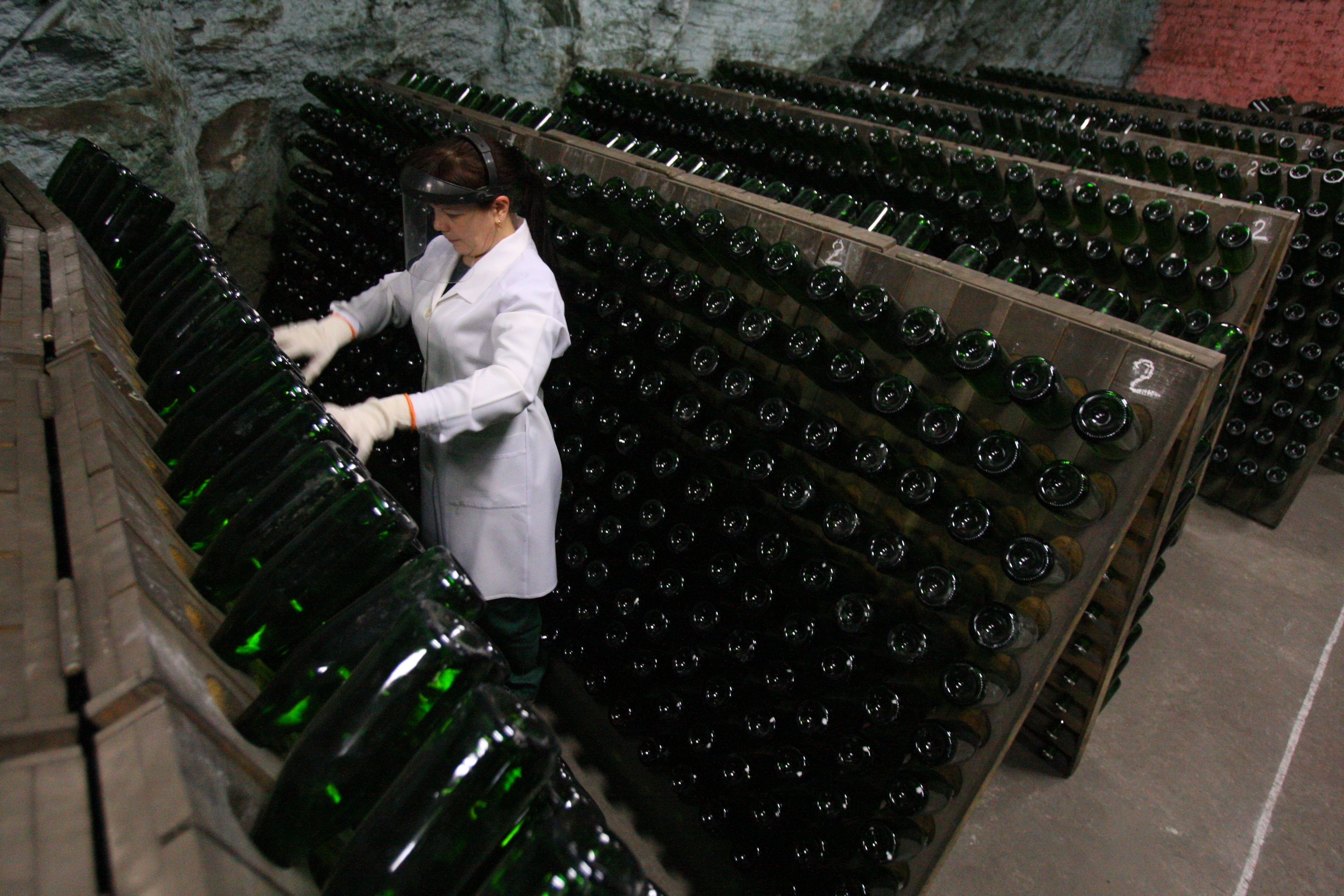
Remuage. The sediment collected on the cork: the bottle roll and lightly knock on the hole stand.

Technology. Authorama collects sediment faster than the manual.
THE CELLARS OF THE ARISTOCRACY. Such scenes I saw only in a movie about wine cellars of the aristocracy: the vaulted gallery, dimly lit yellow light, and huge stacks of containers and bottles, covered with noble dust, and in some places, and cobwebs. Here you can find anything. Here pink 2014, here 2013, I close my eyes and feel the language a little tingle imagining the bright coolness of the first drops of bubbly. This is the workshop Pellerano exposure, 9 hectares vaults filled with wine. The largest in the company.
— Our task — bookmark Pellerano mix (another local term, it is wine mixed with liquor and yeast, remember? — Ed.) stacks and containers, exposure and the emergence of Cuvee, — says the foreman Raphael Nasyrov.
In essence, this mysterious “cuvée” is ready sparkling, just with the sediment from the yeast, it can be drunk. Moreover, until the nineteenth century did not invent the process of disgorging, the wine and drank — a sword cut the neck, drank everything that poured out, and the rest was dumped. However, to afford such could only very rich people. Nasyrov explains: two months is a contact of the yeast with mass-produced liquor, the fermentation process. Yeast feed off sugar and produces carbon dioxide and precipitate. At this time the bottle shift (a good shake to allow the yeast to ferment completely, doing this manually for a day or so to shake up a few thousand). And leave it for further aging from nine months to three years or more, the wine can be kept 15 years. This is the classic method.
After transferring the wine to disturb it is impossible, — emphasizes Nasyrov. — The Deposit must be in the same place. The approach should be sincere, with pleasure, with joy, with heart, with soul. As a woman turning and sparkling.
On — shop champagne, which consists of demyanovo and degorging office. Remuage is the process by which sediment is collected on a temporary tube. Yes, the same “cap of beer”, which was invented in France. On the way to the shop discussing sparkling like a Christmas character and come to the conclusion that this view is too limited. After all, Napoleon himself said, “If I win, I deserve it. If lost, I need it.” So sparkling is the drink of joy and delight — can be drunk on any occasion. And even without it, just to enjoy the taste and the game fine-small bubbles.
Remaine office crowded with wooden desks, each with bottoms up and laid bottle of Cuvee.
— When the wine comes to us, we need to keep all the sediment on the cork, says engineer Elena Gordienko. And instructs Remuera that begins to scroll music stand is inserted in the bottle. Their twist on one-fourth of a circle, with a slight blow on the hole of the stand. So guilty of the “work” every day for two months Cuvee muddy with the sediment becoming shiny and clean. This is a manual remuage, the champagne bottle, which had a similar surgery will cost you $ 600. And then half of the wine prepared by this method. And for the second half of it is Autorama container is placed in a special purpose vehicle, which shakes up the wine again in 3-4 hours, resulting precipitate going faster for a month.
On the necks of the bottles dipped into the icy frame to freeze the sediment, and feed on another machine. It’s already disgorging — the process of extracting sediment from the bottle.
Yes, the first time the bottle is not open you, and a special machine. He resets the cap together with the frozen sediment to it, at the same time removing a few atmospheres (of six stay three or four). Eight years ago this surgery done manually…. People removed the plastic tube, pushing out the sediment from the bottle. Now machine.
Operating alcoholic filling machine — if necessary — transforms the Brut (sparkling all after aging and riddling — dry) to semi-dry and semi-sweet, adding in a bottle of liquor, which, as you remember, blend blend and sugar. The bottle is sealed with Portuguese cork, top fits over the wire-muzzle. Voila — sparkling ready! Then it is shaken and left for another 10-15 days so that the liquor has dissolved in the wine. Then — label, store and your table.
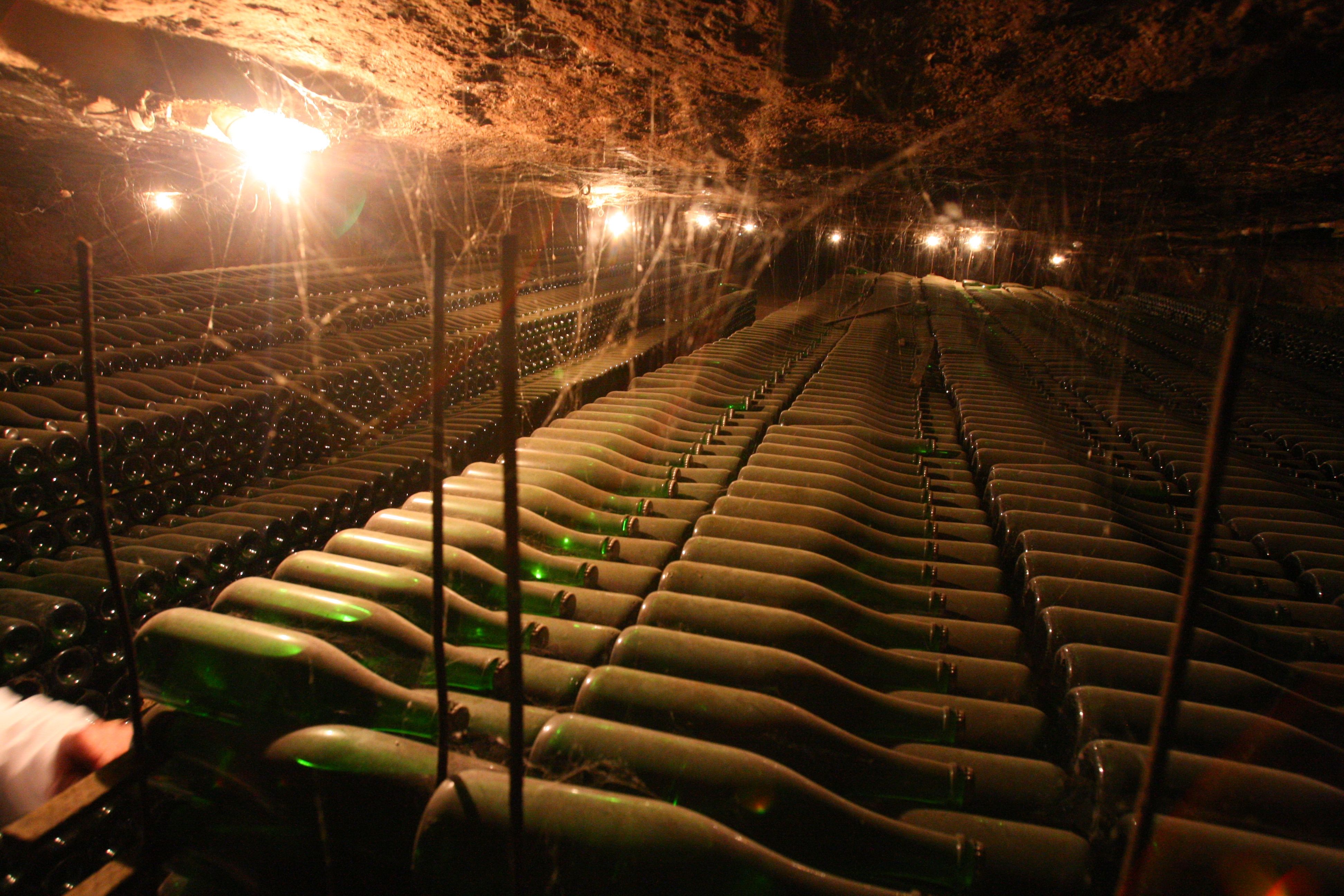
Noble dust. Perfect conditions for wine storage.
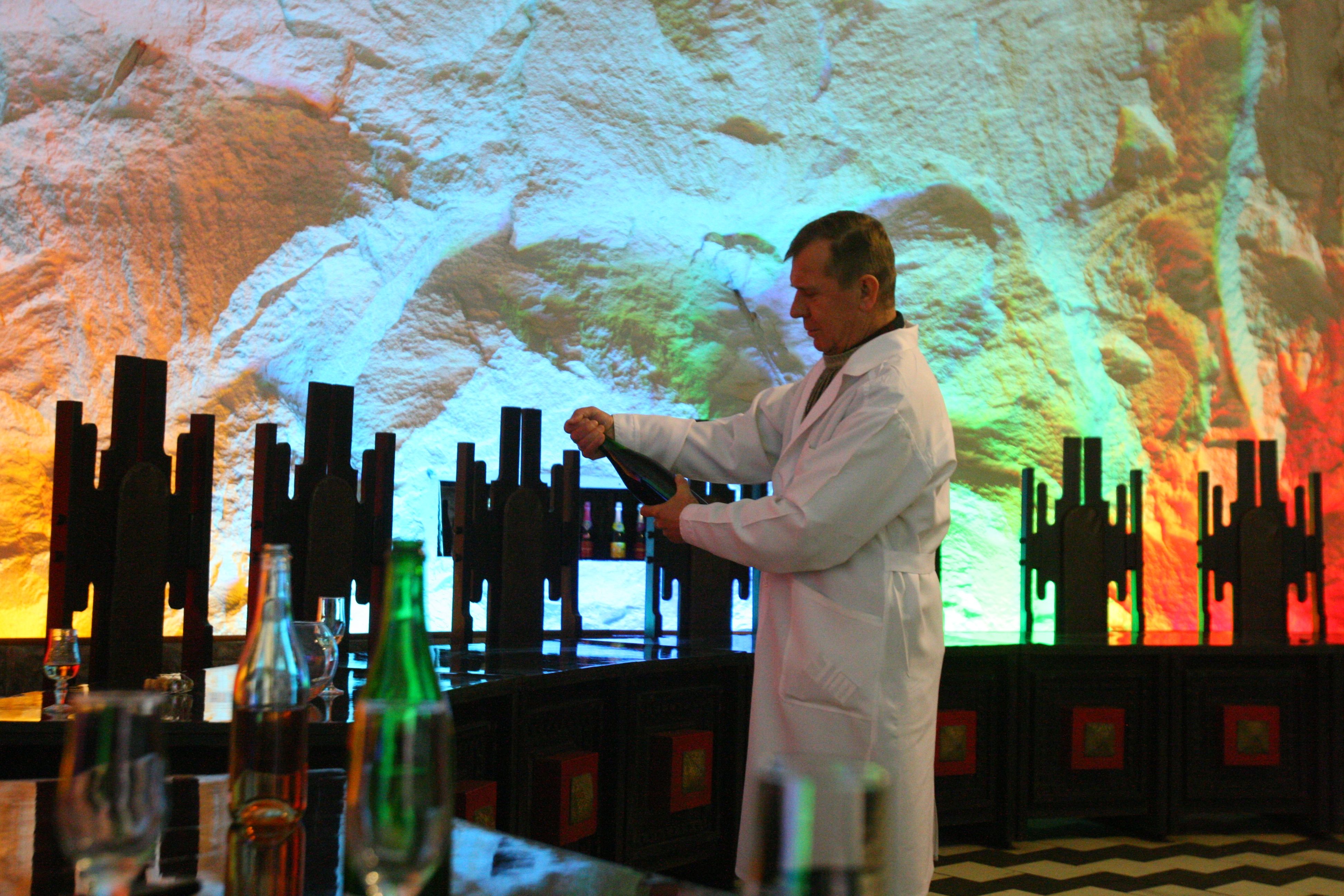
Throne room. Round table, chairs, fumed oak and a beautiful sparkling depth of 75 meters.
BACCHUS, AND REWARD. About 20% of sparkling wines “Artileri” are exported. So Bakhmut aged in the caves of sparkling to enjoy in Germany, China, Israel, USA, Australia, Canada and many other countries.
In the caves of Bahmut is the Keeper of traditions. This is Bacchus, carved in plaster the face of the God of wine, eyebrows, nose, lips manifested themselves, and then, on the 30th anniversary of the factory, the master gave him the final form and given a beard and eyes. It seems that their duties Bacchus copes: the local wine earned a 78 gold medals, 47 silver, 13 Grand Prix cups. It is here for the first time in Eastern Europe, there was a rose Brut. It Bakhmut — Motherland red and nutmeg Brut, which, according to estimates by French sommelier, “are the place to be.” Here create a Brut zero, at which champagne was put on a par with their wines. And only here you can taste the Crimean wines, the reserves of which will last for several years.
All this we learn in the Throne room, huge, with very tall ceiling, at a depth of 75 meters. Round table and high chairs, fumed oak; on each side, carved in the niches, stand the bottle of sparkling wine, this new brand, and rarity. Here ends the journey through the factory — and begins a journey of taste, because it is here, in the heart of the gypsum caves, the best there is a taste. Small-small bubbles of the classical method. Green grapes and green Apple. Barberry candy pink. Red envelops the mouth. And all this under the toast from the best winemakers.
— Pouring wine, we look at its transparency. Let in life there will always be a trust and transparent relationship. On the bouquet, it hear the flowers where are the flowers always love. Realizing a breath, feel the power of nature, it gives a person health. A healthy person is capable of transparent relationship and love! says Raphael Nasyrov. And total: — Thank you, Creator, because of all that we are given of hundreds of cases, cares, occupations, I picked the best wine.
